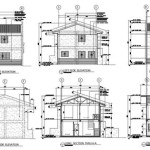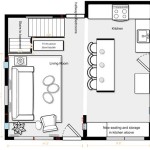Essential Aspects of Dwg Home Plans
Dwg home plans are detailed technical drawings that provide a comprehensive blueprint for constructing a house. They serve as a vital guide for architects, engineers, and contractors, ensuring that the project is executed accurately and efficiently. Understanding the essential aspects of dwg home plans is crucial for anyone involved in the homebuilding process.
1. Floor Plans:
Floor plans are the most fundamental part of a dwg home plan. They provide a top-down view of each floor of the house, showing the layout of rooms, walls, doors, and windows. Floor plans specify the dimensions, square footage, and relationships between different spaces.
2. Elevations:
Elevations are vertical drawings that depict the exterior walls of the house from different angles. They show the height, shape, and details of the structure, including roof lines, windows, and doors. Elevations are essential for visualizing the overall appearance of the house.
3. Sections:
Sections are vertical drawings that cut through the house to reveal its interior structure. They provide a detailed understanding of the construction methods, materials, and relationship between different components. Sections are critical for planning utilities, insulation, and other building systems.
4. Details:
Details are close-up drawings that focus on specific elements of the house, such as window frames, door frames, or cabinetry. They provide detailed specifications for the materials, dimensions, and construction methods used in these areas.
5. Dimensions and Specifications:
Dwg home plans include precise dimensions and specifications for all aspects of the house. These measurements are essential for determining the materials required, estimating costs, and ensuring that the structure meets building codes.
6. Materials and Finishes:
Some dwg home plans also include specifications for the materials and finishes used in the construction. This information can impact the overall aesthetic, durability, and cost of the house.
7. Building Codes and Regulations:
Dwg home plans should comply with applicable building codes and regulations. This ensures that the structure is safe, habitable, and meets the minimum standards set by local authorities.
8. Electrical and Plumbing Plans:
Electrical and plumbing plans are often included as separate documents accompanying dwg home plans. These plans provide detailed layouts for electrical wiring, plumbing fixtures, and ventilation systems.
9. Site Plans:
Site plans show the location of the house on the property and its relationship to the surrounding environment. They include details such as driveways, patios, landscaping, and any other external structures.
10. Revisions and Updates:
As the design evolves, dwg home plans may undergo revisions and updates. It's essential to keep track of these changes and ensure that all stakeholders have the most current version to avoid errors or misunderstandings.
Understanding the essential aspects of dwg home plans empowers homeowners, architects, and contractors to make informed decisions throughout the design and construction process. By carefully reviewing and interpreting these plans, they can ensure that their dream home is built to the highest standards of quality and accuracy.

32 Autocad Small House Plans Drawings Free Design Home Floor Modern Plan

Architecture House Ground Floor And First Plan Autocad Drawing Dwg File

Floor Plan Free Cads

30 X30 House Layout Plan Autocad Drawing Dwg File Cadbull

Autodesk Competitors Architecture House Plan Furniture Design Drawings Architectural Floor Plans Autocad Free

House Dwg Free Cad Blocks

Design Your Own Home House Designing Homes

How To Draw Floor Plans In Autocad Edrawmax

33 5 X45 Amazing 2bhk East Facing House Plan As Per Vastu Shastra Autocad Dwg And File Details Cad Free Plans Budget

Autocad 3 Bedrooms House Layout Plan Drawing Dwg File








